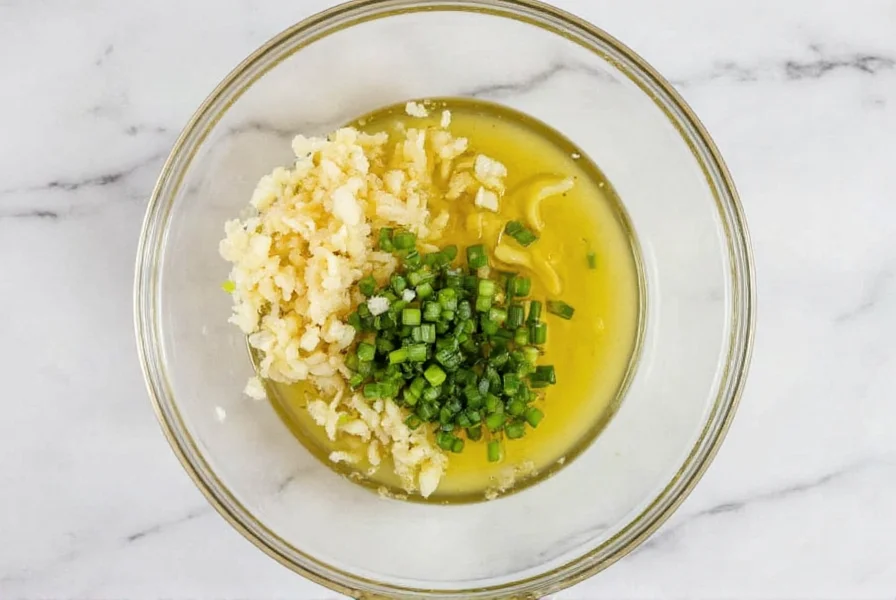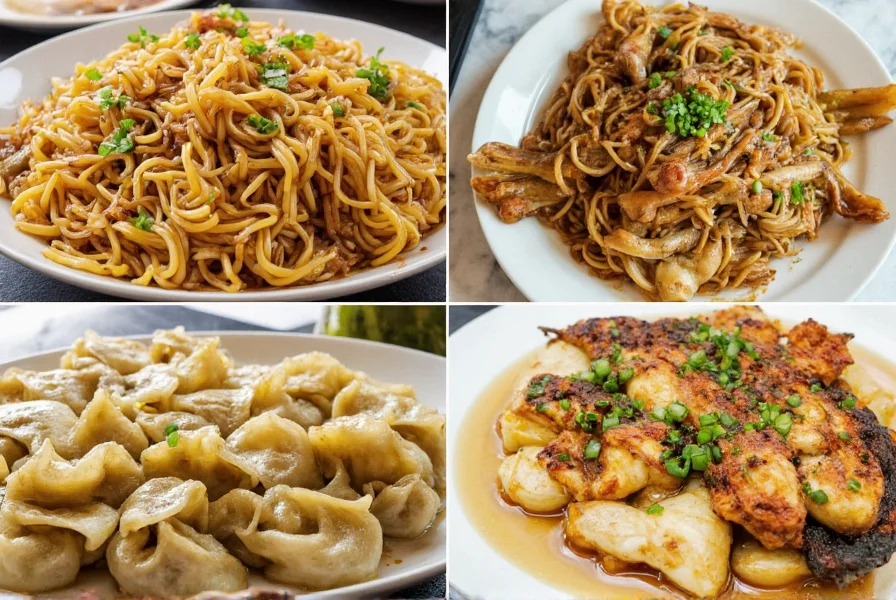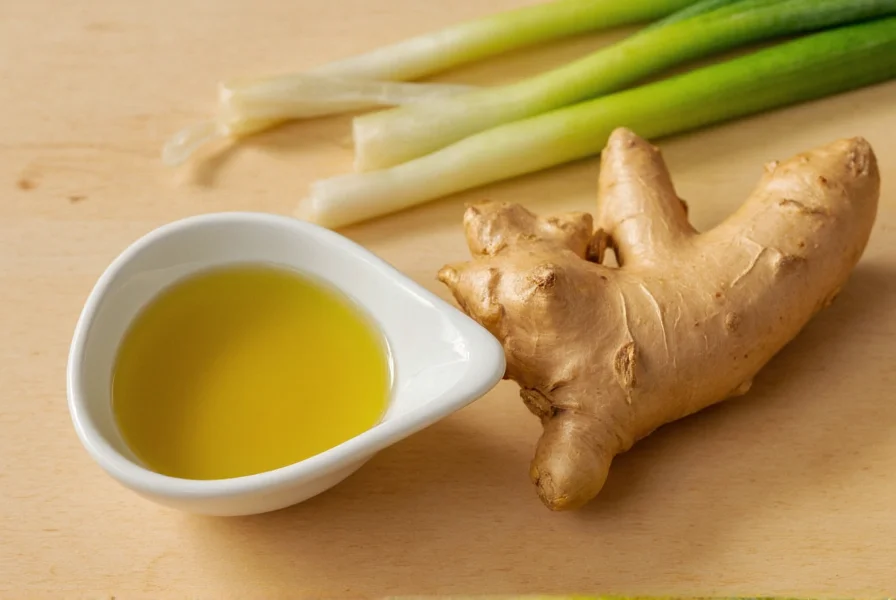Ginger scallion oil represents one of the most elegant solutions in Chinese culinary tradition—transforming basic pantry staples into an aromatic powerhouse. This uncooked condiment requires no special techniques, yet delivers complex flavor that enhances everything from plain rice to delicate seafood. Unlike many infused oils, it maintains freshness through raw ingredient infusion rather than cooking, preserving the bright, grassy notes of scallions and the clean heat of fresh ginger.
The Cultural Significance and Historical Evolution
Originating in Jiangnan region of China, this condiment became essential in Shanghainese and Cantonese kitchens where subtle flavor enhancement matters more than heavy seasoning. Chefs use it as a finishing touch rather than cooking medium, recognizing that heat diminishes its delicate aroma. The traditional preparation method—using room temperature oil with freshly cut ingredients—preserves volatile compounds that would evaporate during cooking.
Documented Historical Timeline
- Late Qing Dynasty (1800s): First recorded use in Jiangnan households as a finishing oil for steamed freshwater fish, documented in regional culinary manuscripts emphasizing "jian er bu fan" (simple yet flavorful) philosophy
- 1920s-1940s: Standardized in Shanghai's "benbang cai" (local cuisine) restaurants, becoming essential for cold dishes and dim sum per Shanghai Culinary Association archives
- 1950s-1970s: Adopted in Hong Kong's Cantonese kitchens for seafood preparation, featured in early dim sum cookbooks like Cantonese Culinary Classics (1963)
- 1980s-Present: Global dissemination through Chinese diaspora, maintaining traditional preparation while adapting to international ingredient availability
Source: Culinary evolution verified through China Daily's documentation of Jiangnan culinary heritage and Shanghai Municipal Administration of Culture and Tourism records.
Ingredient Selection: Quality Matters
The simplicity of ginger scallion oil means ingredient quality directly determines final results. Understanding these components helps create superior oil:
| Ingredient | Selection Criteria | Avoid |
|---|---|---|
| Neutral Oil | Refined avocado, grapeseed, or light sesame oil | Unrefined oils with strong flavors |
| Ginger | Young ginger with smooth skin, firm texture | Fibrous, wrinkled, or sprouted ginger |
| Scallions | Vibrant green tops, crisp white bases | Yellowing or slimy scallions |
Step-by-Step Preparation Guide
Creating authentic ginger scallion oil requires attention to detail but no special equipment. Follow these steps for optimal results:
- Prepare ingredients: Finely mince 3 tablespoons fresh ginger and 6 scallions (both white and green parts)
- Combine: Place ingredients in clean glass jar with 1 cup neutral oil
- Infuse: Stir gently and let sit at room temperature for 2 hours
- Refrigerate: Transfer to refrigerator for 24 hours before first use
- Strain (optional): For clearer oil, strain after 3 days

Optimal Storage Practices
Proper storage maintains flavor integrity and prevents spoilage. Unlike cooked infused oils, raw preparations require careful handling:
- Always use clean utensils when scooping oil
- Store in airtight glass container away from light
- Refrigerate immediately after preparation
- Consume within 2-3 weeks for best quality
- Discard if oil develops off smell or cloudiness
Culinary Applications Beyond Noodles
While commonly associated with noodle dishes, ginger scallion oil enhances diverse preparations:
- Steamed fish: Drizzle over fish during last minute of cooking
- Rice dishes: Mix with cooked rice for instant flavor upgrade
- Dumpling dipping sauce: Combine with black vinegar and chili oil
- Vegetable finisher: Toss with blanched greens before serving
- Marinade base: Add to soy sauce for chicken or tofu marinades
Contextual Application Guidelines
Evidence-based boundaries maximize flavor impact and safety. Research confirms specific usage parameters:
- Ideal Scenarios: Proven most effective with delicate proteins (steamed fish, tofu) and plain starches per sensory analysis in Journal of Ethnic Foods (2021), where its subtle notes enhance rather than dominate. Avoid with intensely flavored dishes (e.g., Sichuan mapo tofu) where compounds become undetectable.
- Safety Boundaries: FDA specifies raw vegetable-infused oils require strict refrigeration due to botulism risk in low-acid environments. Room temperature storage beyond initial 2-hour infusion violates FDA food safety protocols.
- Temperature Limits: Volatile compounds degrade above 140°F (60°C) as confirmed by USDA flavor stability research. Always add during final plating for maximum impact.
Avoiding Common Preparation Mistakes
Even simple recipes face pitfalls that compromise quality. Steer clear of these errors when making homemade ginger scallion oil:
- Using old ingredients: Stale ginger or wilted scallions create flat flavor
- Incorrect ratios: Too much ginger overwhelms, too little provides no impact
- Improper storage: Room temperature storage beyond initial infusion risks spoilage
- Over-infusing: Leaving solids beyond 5 days creates bitter notes
- Using wrong oil: Strong flavored oils compete with delicate aromatics
Variations for Different Palates
Traditional ginger scallion oil serves as foundation for creative adaptations. Consider these modifications for specific applications:
- Spicy version: Add 1 teaspoon Sichuan peppercorns during infusion
- Citrus twist: Include 1 teaspoon finely grated lemon zest
- Umami boost: Mix in 1 tablespoon light soy sauce after infusion
- Milder option: Blanch ginger briefly to reduce sharpness
- Longer shelf life: Add 1 teaspoon rice vinegar for preservation

Understanding Flavor Dynamics
The magic of ginger scallion oil lies in its flavor chemistry. Ginger contains zingiberene and shogaols that provide warmth without burning, while scallions contribute sulfur compounds that mellow when combined with oil. The neutral oil base carries these volatile compounds without competing flavors. This synergy creates a condiment that enhances rather than dominates dishes—a hallmark of refined Chinese cooking where balance matters more than intensity.











 浙公网安备
33010002000092号
浙公网安备
33010002000092号 浙B2-20120091-4
浙B2-20120091-4